Products for Miscellaneous
-
BCN7836
Decylic acid vanillylamide
Botanical source: The fruits of Capsicum annuum L. var. annuum.(CAS NO.:31078-36-1)
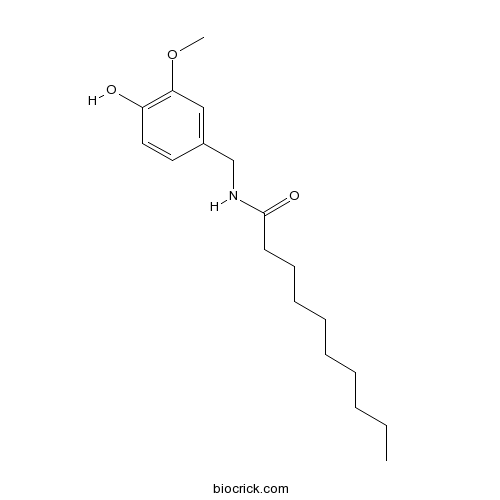
-
BCN6262
Aristolochic acid A
Aristolochic acid A (Aristolochic acid I; TR 1736) is the main component of plant extract Aristolochic acids, which are found in various herbal plants of genus Aristolochia and Asarum. Aristolochic acid A significantly reduces both activator protein 1 (AP-1) and NF-κB activities. Aristolochic acid A reduces BLCAP gene expression in human cell lines.(CAS NO.:313-67-7)
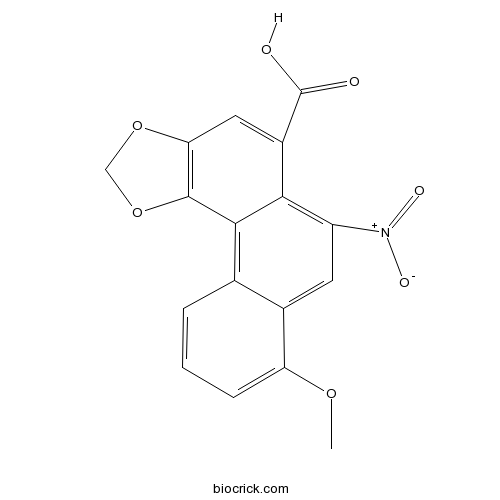
-
BCN5231
Sutherlandin trans-p-coumarate
Botanical source: The herbs of Exochorda racemosa (Lindl.) Rehd(CAS NO.:315236-68-1)

-
BCN3286
4-Nitrobenzyl carbamate
Botanical source: The roots of Solanum integrifolium(CAS NO.:32339-07-4)

-
BCN5340
Quetiapine hydroxy impurity
Botanical source: The herbs of Ampelopsis japonica (Thunb.) Makino(CAS NO.:329216-67-3)

-
BCN2948
Fucoxanthin
Fucoxanthin is a marine carotenoid and shows anti-obesity, anti-diabetic, anti-oxidant, anti-inflammatory and anticancer activities.(CAS NO.:3351-86-8)
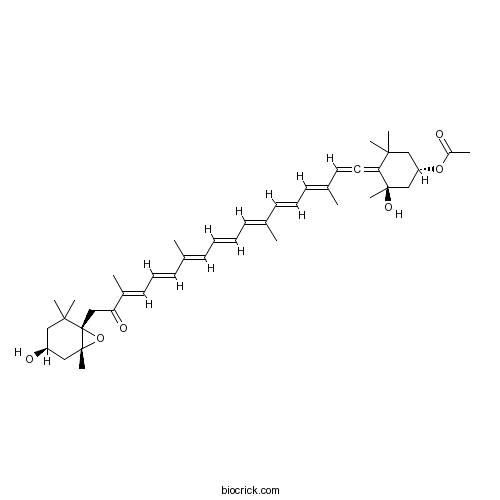
-
BCN2418
Cyclo(Phe-Leu)
Botanical source: The roots of Rubia schumanniana Pritzel(CAS NO.:3354-31-2)

-
BCN5271
3-Methoxyfuran
Botanical source: The woods of Pseudolarix kaempferi.(CAS NO.:3420-57-3)

-
BCN6709
Maltotetraose
Maltotetraose can be used as a substrate for the enzyme-coupled determination of amylase activity in biological fluids.(CAS NO.:34612-38-9)
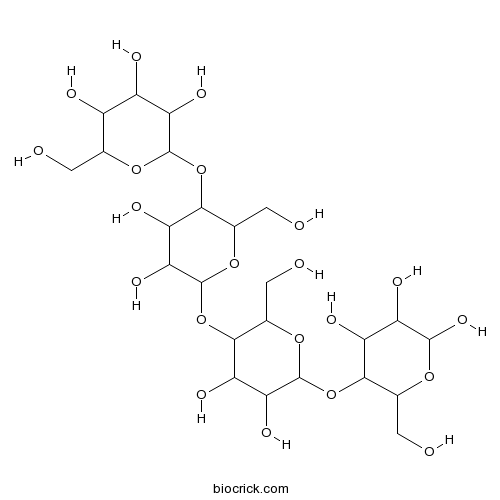
-
BCN6710
Maltohexaose
Maltohexaose is a natural saccharide, and can be produced from amylose, amylopectin and whole starch.(CAS NO.:34620-77-4)

-
BCN2246
1-Indanamine
Botanical source: (CAS NO.:34698-41-4)
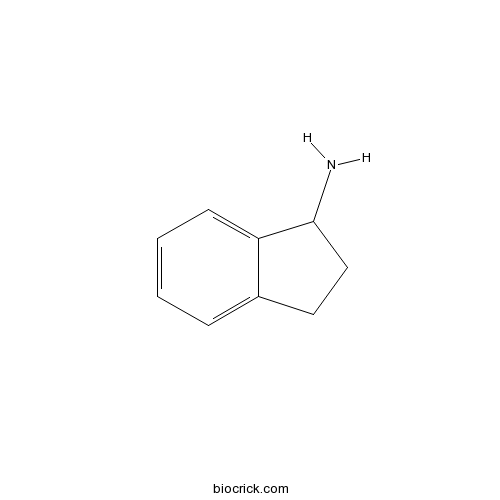
-
BCN2258
Methyl 3-methoxyacrylate
Botanical source: The seeds of Vicia angustifolia(CAS NO.:34846-90-7)
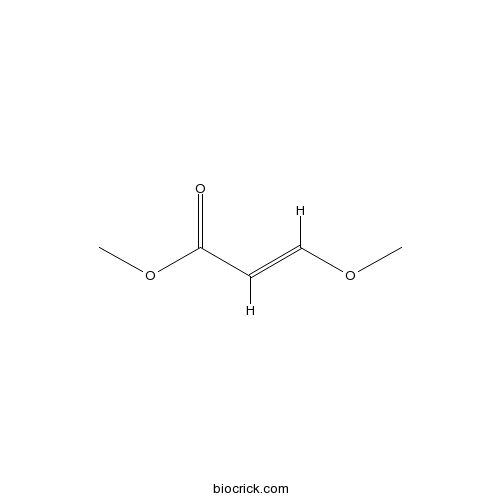
-
BCN2244
1-Chloroindan
Botanical source: (CAS NO.:35275-62-8)

-
BCN8148
Pterosin G
Botanical source: The herbs of Pteris aquilinum(CAS NO.:35964-50-2)

-
BCN6432
D-(+)-Fucose
Botanical source: The brown algae.(CAS NO.:3615-37-0)

-
BCN2592
alpha-L-Rhamnose
Rhamnose (L-Rhamnose) is a monosaccharide found in plants and bacteria. Rhamnose-conjugated immunogens is used in immunotherapies. Rhamnose crosses the epithelia via the transcellular pathway and acts as a marker of intestinal absorption.(CAS NO.:3615-41-6)

-
BCN1285
Phytin
Botanical source: The herbs of Oryza sativa(CAS NO.:3615-82-5)

-
BCN3799
2-Pentylfuran
Botanical source: The seeds of Glycine max.(CAS NO.:3777-69-3)
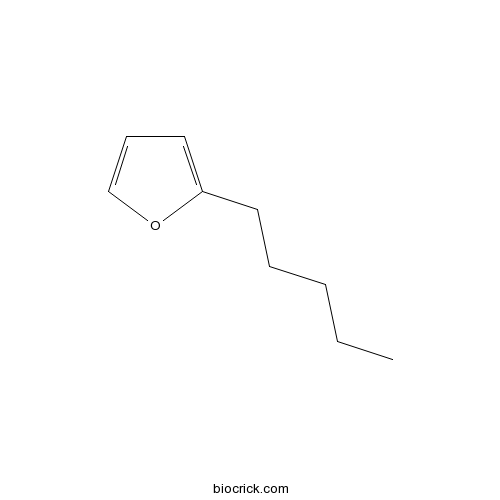
-
BCN2226
Homovanillic Acid Sulfate
Botanical source: (CAS NO.:38339-06-9)

-
BCN1031
Ligustilide
Ligustilide is an effective constituent extracted from Angelica sinensis.(CAS NO.:4431-01-0)

-
BCN2349
Sulforaphane
Sulforaphane is an isothiocyanate present naturally in widely consumed vegetables. Sulforaphane increases tumor suppressor protein transcription and inhibits histone deacetylase activity. Sulforaphane activates Nrf2 and inhibits high glucose-induced progression of pancreatic cancer via AMPK dependent signaling. Sulforaphane has shown anti-cancer and anti-inflammatory activities.(CAS NO.:4478-93-7)
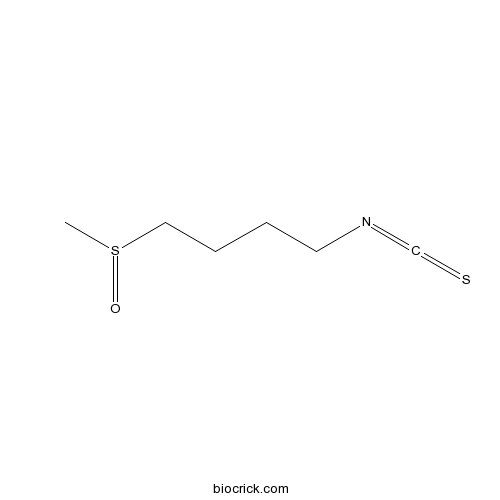
-
BCN8174
Neocnidilide
Botanical source: The roots of Cnidium officinale(CAS NO.:4567-33-3)
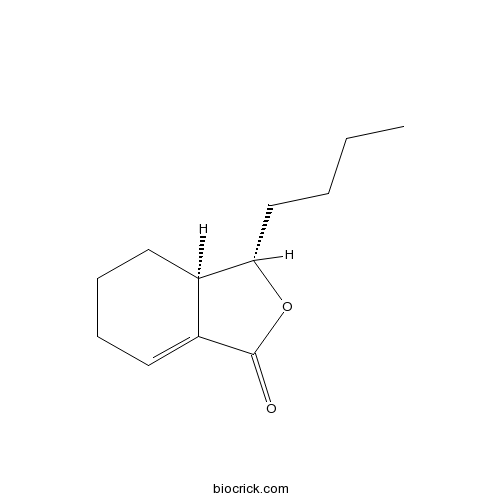
-
BCN8097
Colupulone
Botanical source: The herbs of Humulus lupulus(CAS NO.:468-27-9)

-
BCN8292
1-Kestose
1-Kestose, the smallest fructooligosaccharide component, which efficiently stimulates Faecalibacterium prausnitzii as well as Bifidobacteria.(CAS NO.:470-69-9)

-
BCN2248
Astaxanthin
Astaxanthin, a red dietary carotenoid isolated from Haematococcus pluvialis, is a modulator of PPARγ and a potent antioxidant with antiproliferative, neuroprotective and anti-inflammatory activity. Astaxanthin has potential in the treatment of various diseases, such as cancers and Parkinson’s disease, cardiovascular disease. Due to its bright red colour, Astaxanthin could be used as a food colorant in animal feeds.(CAS NO.:472-61-7)






























